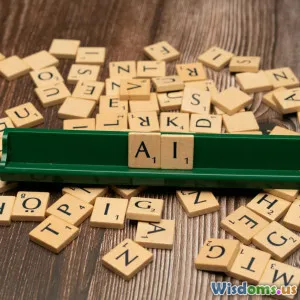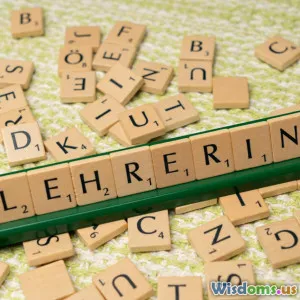
Exploring Bilingualism: Benefits and Challenges
7 min read Discover the cognitive, social, and professional benefits of bilingualism, along with the challenges language learners face. (0 Reviews)
Exploring Bilingualism: Benefits and Challenges
Introduction
In our increasingly interconnected world, bilingualism is no longer just an advantage; for many, it is a necessity. But why do so many people strive to master two or more languages, and what truly lies behind this ability? Bilingualism is more than the sum of words and grammar—it shapes brains, cultures, and opportunities in profound ways. Whether born into bilingual families or embarking on second language acquisition later in life, individuals who communicate in multiple languages navigate a unique cognitive and social landscape. This article dives deep into the myriad benefits bilingualism offers, alongside some of the real-life challenges it presents. Buckle up for a journey into the linguistic mind that will inspire you to reconsider what it means to speak two languages.
Cognitive Benefits of Bilingualism
Enhanced Executive Function
One of the most celebrated advantages of bilingualism is its positive impact on executive functions—the brain's ability to manage attention, multitask, and switch between activities smoothly. Studies from researchers like Ellen Bialystok have demonstrated that bilingual individuals often excel in tasks requiring cognitive flexibility and inhibition control. This stems from their constant use of two linguistic systems, compelling the brain to suppress one language while using the other. For example, bilingual children outperform monolingual peers in problem-solving tests that require ignoring distractions.
Delayed Onset of Dementia
In groundbreaking research, bilingualism has been linked with a delay in the onset of dementia and Alzheimer's disease by up to 4 to 5 years as compared to monolingual individuals. This was notably highlighted in a 2013 study published in the journal Neurology. The mental juggling of languages appears to create cognitive reserve, strengthening neural pathways that help protect the brain in old age.
Improved Metalinguistic Awareness
Compared to monolingual speakers, bilinguals demonstrate a heightened metalinguistic awareness—that is, their ability to think about language as a system. This skill enhances reading comprehension and grammar acquisition because bilinguals understand language rules more abstractly and consciously.
Social and Cultural Advantages
Bridging Cultures and Building Empathy
Language is deeply intertwined with culture. Bilingual individuals often gain insights into different ways of thinking, traditions, and social cues. This cultural fluency nurtures empathy and reduces biases, helping bilinguals navigate multicultural environments with greater ease.
Take, for instance, the concept of "siesta" in Spanish-speaking countries or "hanami" in Japan—knowing the language allows access to these unique cultural experiences, enriching personal worldview and social connections.
Expanded Professional Opportunities
In a globalized marketplace, bilingualism is an undeniable professional asset. According to a survey by New American Economy, U.S. demand for bilingual workers more than doubled between 2010 and 2015. Fields like diplomacy, education, healthcare, and technology prize employees who communicate seamlessly across languages. For example, a bilingual nurse can better support patients from diverse backgrounds, improving healthcare outcomes.
Challenges in Bilingualism
Language Interference and Code-Switching
One common challenge is "language interference," where elements of one language creeping into another can cause grammatical mistakes or hesitations. Code-switching—the practice of switching languages within sentences—may sometimes confuse listeners or be viewed negatively, especially in formal settings.
Maintaining Both Languages
Bilingual individuals often face difficulties in sustaining high competency levels in both languages, especially if one dominates daily interactions or media exposure. Heritage language speakers can sometimes experience language attrition, wherein the less-used language fades.
Societal Attitudes and Stigma
In some communities, bilingual speakers face skepticism or negative stereotypes about their accents or fluency—particularly if one language is a minority or immigrant language. Children growing up bilingually may experience pressure to assimilate, which can complicate identity development.
Strategies to Overcome Bilingualism Challenges
Intentional Practice and Immersion
Consistent use and immersion in both languages help maintain proficiency. Tools like language exchange meetups, bilingual literature, and media are excellent for quality exposure.
Positive Language Reinforcement
Encouragement from family, schools, and community fosters confidence in bilingual speakers. Celebrating bilingual identity promotes pride and combats feelings of inadequacy.
Embracing Code-Switching as a Strength
Rather than viewing code-switching as a deficit, many linguists now recognize it as a linguistic resource that demonstrates cognitive flexibility and cultural hybridity.
Conclusion
Bilingualism offers significant cognitive advantages, enhanced cultural awareness, and expanded professional pathways. Yet, it comes with complex challenges such as language maintenance and societal perceptions. Understanding these dynamics can empower both current and aspiring bilinguals to navigate their linguistic journey more effectively.
As globalization accelerates, fostering bilingualism may not only enrich individuals but also build bridges across cultures—making bilingualism an invaluable skill in 21st-century society. Whether for nurturing brain health, accessing broader cultural horizons, or enhancing career prospects, embracing bilingualism is a truly transformative pursuit worth exploring.
References
- Bialystok, E. et al. (2012). Bilingualism: consequences for mind and brain. Trends in Cognitive Sciences, 16(4), 240-250.
- Schweizer, T. A., et al. (2013). Bilingualism as a contributor to cognitive reserve: Evidence from brain atrophy in Alzheimer’s disease. Neurology, 81(22), 1938-1944.
- New American Economy (2017). Not Lost in Translation: The Growing Importance of Foreign Language Skills in the U.S. Job Market.
Author’s note: Embrace the power of words; learning languages opens doors beyond borders.
Rate the Post
User Reviews
Popular Posts




















